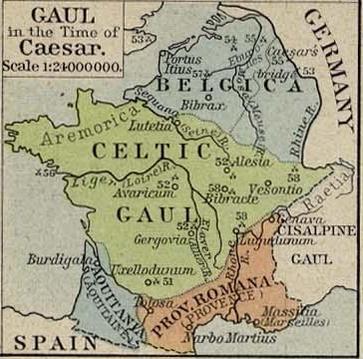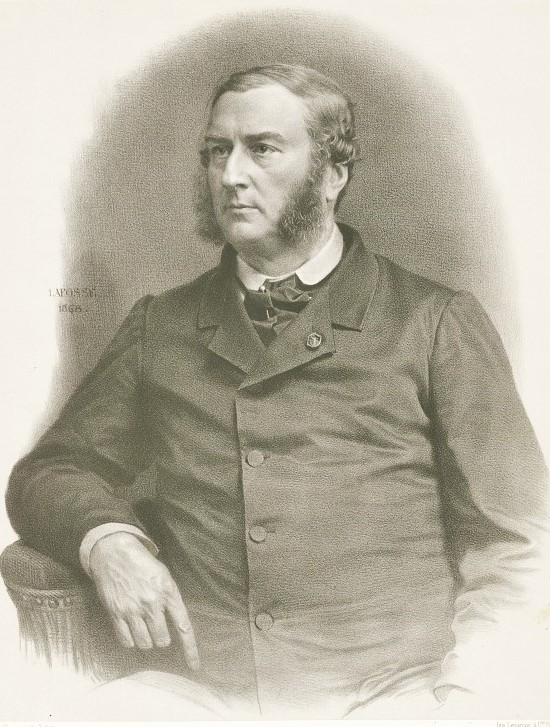|
William Henry Corfield (hygienist)
William Henry Corfield (14 December 1843 – 26 August 1903) was an English public health physician. Appointed Professor of Hygiene and Public Health at University College London in 1869, Corfield had a major influence on public health and household sanitation in Victorian England before there was extensive knowledge of bacteriology and a clear understanding of infectious disease transmission. He was also an early advocate of land filtration and sewage farms. Life William Henry Corfield was born at Shrewsbury on 14 December 1843. He was the eldest son of Thomas Corfield, a chemist, and Jane Corfield (née Brown). He was educated at Cheltenham Grammar School; he was a precocious scholar and obtained a Demyship to study Natural Science at Magdalen College, Oxford in March 1861 and matriculated on 12 October 1861 at the age of 17.The Corfields: A history of the Corfields from 1180 to the present day In 1863 he took a first class in Mathematics at Moderations. In the same year ... [...More Info...] [...Related Items...] OR: [Wikipedia] [Google] [Baidu] |
University College London
, mottoeng = Let all come who by merit deserve the most reward , established = , type = Public research university , endowment = £143 million (2020) , budget = £1.544 billion (2019/20) , chancellor = Anne, Princess Royal(as Chancellor of the University of London) , provost = Michael Spence , head_label = Chair of the council , head = Victor L. L. Chu , free_label = Visitor , free = Sir Geoffrey Vos , academic_staff = 9,100 (2020/21) , administrative_staff = 5,855 (2020/21) , students = () , undergrad = () , postgrad = () , coordinates = , campus = Urban , city = London, England , affiliations = , colours = Purple and blue celeste , nickname ... [...More Info...] [...Related Items...] OR: [Wikipedia] [Google] [Baidu] |
George Rolleston
George Rolleston MA MD FRCP FRS (30 July 1829 – 16 June 1881) was an English physician and zoologist. He was the first Linacre Professor of Anatomy and Physiology to be appointed at the University of Oxford, a post he held from 1860 until his death in 1881. Rolleston, a friend and protégé of Thomas Henry Huxley, was an evolutionary biologist. Life Rolleston was born at Maltby Hall, near Rotherham, Yorkshire, England. His parents were Rev. George Rolleston (rector and squire of Maltby) and Anne Nettleship; his brother, William Rolleston, became a prominent politician in New Zealand. Rolleston was educated at Queen Elizabeth's Grammar School, Gainsborough; Sheffield Collegiate School; Pembroke College, Oxford and St Bartholomew's Hospital, London. He qualified with the degrees of BA (1850, 1st Class), MA and MD. The same year he entered Pembroke College, Oxford, and took a First Class in Classics. After qualifying as a physician, Rolleston became a Fellow of Pembroke C ... [...More Info...] [...Related Items...] OR: [Wikipedia] [Google] [Baidu] |
Lugdunum
Lugdunum (also spelled Lugudunum, ; modern Lyon, France) was an important Roman city in Gaul, established on the current site of Lyon. The Roman city was founded in 43 BC by Lucius Munatius Plancus, but continued an existing Gallic settlement with a likely population of several thousands. It served as the capital of the Roman province of Gallia Lugdunensis and was an important city in the western half of the Roman Empire for centuries. Two emperors, Claudius and Caracalla, were born in Lugdunum. In the period 69–192 AD, the city's population may have numbered 50,000 to 100,000, and possibly up to 200,000 inhabitants. The original Roman city was situated west of the confluence of the Rhône and Saône, on the Fourvière heights. By the late centuries of the empire much of the population was located in the Saône River valley at the foot of Fourvière. Name The Roman city was founded as ''Colonia Copia Felix Munatia'', a name invoking prosperity and the blessing of ... [...More Info...] [...Related Items...] OR: [Wikipedia] [Google] [Baidu] |
Roman Aqueduct
The Romans constructed aqueducts throughout their Republic and later Empire, to bring water from outside sources into cities and towns. Aqueduct water supplied public baths, latrines, fountains, and private households; it also supported mining operations, milling, farms, and gardens. Aqueducts moved water through gravity alone, along a slight overall downward gradient within conduits of stone, brick, concrete or lead; the steeper the gradient, the faster the flow. Most conduits were buried beneath the ground and followed the contours of the terrain; obstructing peaks were circumvented or, less often, tunneled through. Where valleys or lowlands intervened, the conduit was carried on bridgework, or its contents fed into high-pressure lead, ceramic, or stone pipes and siphoned across. Most aqueduct systems included sedimentation tanks, which helped to reduce any water-borne debris. Sluices, ''castella aquae'' (distribution tanks) and stopcocks regulated the supply to indivi ... [...More Info...] [...Related Items...] OR: [Wikipedia] [Google] [Baidu] |
Lyon
Lyon,, ; Occitan language, Occitan: ''Lion'', hist. ''Lionés'' also spelled in English as Lyons, is the List of communes in France with over 20,000 inhabitants, third-largest city and Urban area (France), second-largest metropolitan area of France. It is located at the confluence of the rivers Rhône and Saône, to the northwest of the French Alps, southeast of Paris, north of Marseille, southwest of Geneva, northeast of Saint-Étienne. The City of Lyon proper had a population of 522,969 in 2019 within its small municipal territory of , but together with its suburbs and exurbs the Lyon metropolitan area had a population of 2,280,845 that same year, the second most populated in France. Lyon and 58 suburban municipalities have formed since 2015 the Lyon Metropolis, Metropolis of Lyon, a directly elected metropolitan authority now in charge of most urban issues, with a population of 1,411,571 in 2019. Lyon is the Prefectures in France, prefecture of the Auvergne-Rhône-Alpes ... [...More Info...] [...Related Items...] OR: [Wikipedia] [Google] [Baidu] |
Apollinaire Bouchardat
Apollinaire Bouchardat (July 23, 1809 – April 7, 1886) was a French pharmacist and hygienist born in L'Isle-sur-Serein. Biography He studied at the Ecole de pharmacie de Paris and the Muséum d'Histoire Naturelle, and later became chief pharmacist at the Hôtel-Dieu de Paris, where he worked for much of his career. In the mid-1850s he became professor of hygiene at the Faculté de médecine. Among his written works was the popular "''Nouveau Formulaire Magistral''", a formulary that was published over many editions. It contained information about health spas and pharmaceutical formulae that included natural cures and remedies for all types of ailments. Beginning in 1840, he was editor of the journal "''Annuaire de thérapeutique, de matière médicale de pharmacie et de toxicologie''". [...More Info...] [...Related Items...] OR: [Wikipedia] [Google] [Baidu] |
Alfred Hardy (dermatologist)
Alfred Louis Philippe Hardy (30 November 1811, Paris – 23 January 1893, Paris) was a French dermatologist. In 1836 he received his medical doctorate in Paris, where in 1839 he became ''chef de clinique'' under Pierre Fouquier at the Hôpital de la Charité. In 1847 he obtained his agrégation at the faculty of medicine in Paris, and four years later, succeeded Jean Guillaume Auguste Lugol as ''chef de service'' at the Hôpital Saint-Louis. For several years he held classes in dermatology at the hospital. In 1867 he succeeded Jules Béhier as chair of internal pathology at the university, and in 1876 attained the chair of clinical medicine at Hôpital Necker.Alfred Louis Philippe Hardy (1811-1893) Historia de la Medicina [...More Info...] [...Related Items...] OR: [Wikipedia] [Google] [Baidu] |
Germain Sée
Germain Sée (February 6, 1818 – May 12, 1896) was a French clinician who was a native of Ribeauvillé, Haut-Rhin. He studied medicine in Paris, obtaining his doctorate in 1846 with a dissertation on ergotism ("''Recherches sur les propriétés du seigle ergoté et de ses principes constituants''"). In 1852 he became a physician of hospitals in Paris,See (Germain) biuSante and subsequently worked at La Rochefoucauld (from 1857), Beaujon (from 1861), Pitié (from 1862) and Charité (from 1868) hospitals. In 1866 he succeeded [...More Info...] [...Related Items...] OR: [Wikipedia] [Google] [Baidu] |
Jules Béhier
Louis-Jules Béhier (26 August 1813 in Paris – 7 May 1876 in Paris) was a French physician. In 1837 he received his doctorate at Paris with the dissertation-thesis "''Recherches sur quelques points de pathologie''". In 1844 he obtained his agrégation and in 1849 became ''médecin des hôpitaux''. In 1864 he attained the chair of internal pathology at the faculty of medicine in Paris. As a professor, he was associated with the Hôpital de la Charité (1864–67), Hôpital Pitié (1867–69) and the Hôtel-Dieu (1869–76). In 1866 he became a member of the Académie nationale de médecine (section for pathological anatomy). He is credited with the popularization of the hypodermic syringe in France, a device that had been invented in 1853. He is also known for his pioneer experimentation with the opiate narceine, and for his advocacy of hydrotherapy (cold water baths) and alcohol (a "Todd's mixture" containing brandy) for the treatment of typhoid fever. With dermatologist ... [...More Info...] [...Related Items...] OR: [Wikipedia] [Google] [Baidu] |
Sicily
(man) it, Siciliana (woman) , population_note = , population_blank1_title = , population_blank1 = , demographics_type1 = Ethnicity , demographics1_footnotes = , demographics1_title1 = Sicilian , demographics1_info1 = 98% , demographics1_title2 = , demographics1_info2 = , demographics1_title3 = , demographics1_info3 = , timezone1 = CET , utc_offset1 = +1 , timezone1_DST = CEST , utc_offset1_DST = +2 , postal_code_type = , postal_code = , area_code_type = ISO 3166 code , area_code = IT-82 , blank_name_sec1 = GDP (nominal) , blank_info_sec1 = €89.2 billion (2018) , blank1_name_sec1 = GDP per capita , blank1_info_sec1 ... [...More Info...] [...Related Items...] OR: [Wikipedia] [Google] [Baidu] |
Italy
Italy ( it, Italia ), officially the Italian Republic, ) or the Republic of Italy, is a country in Southern Europe. It is located in the middle of the Mediterranean Sea, and its territory largely coincides with the homonymous geographical region. Italy is also considered part of Western Europe, and shares land borders with France, Switzerland, Austria, Slovenia and the enclaved microstates of Vatican City and San Marino. It has a territorial exclave in Switzerland, Campione. Italy covers an area of , with a population of over 60 million. It is the third-most populous member state of the European Union, the sixth-most populous country in Europe, and the tenth-largest country in the continent by land area. Italy's capital and largest city is Rome. Italy was the native place of many civilizations such as the Italic peoples and the Etruscans, while due to its central geographic location in Southern Europe and the Mediterranean, the country has also historicall ... [...More Info...] [...Related Items...] OR: [Wikipedia] [Google] [Baidu] |
France
France (), officially the French Republic ( ), is a country primarily located in Western Europe. It also comprises of overseas regions and territories in the Americas and the Atlantic, Pacific and Indian Oceans. Its metropolitan area extends from the Rhine to the Atlantic Ocean and from the Mediterranean Sea to the English Channel and the North Sea; overseas territories include French Guiana in South America, Saint Pierre and Miquelon in the North Atlantic, the French West Indies, and many islands in Oceania and the Indian Ocean. Due to its several coastal territories, France has the largest exclusive economic zone in the world. France borders Belgium, Luxembourg, Germany, Switzerland, Monaco, Italy, Andorra, and Spain in continental Europe, as well as the Netherlands, Suriname, and Brazil in the Americas via its overseas territories in French Guiana and Saint Martin. Its eighteen integral regions (five of which are overseas) span a combined area of and contain clos ... [...More Info...] [...Related Items...] OR: [Wikipedia] [Google] [Baidu] |
_(cropped).jpg)


.jpg)


